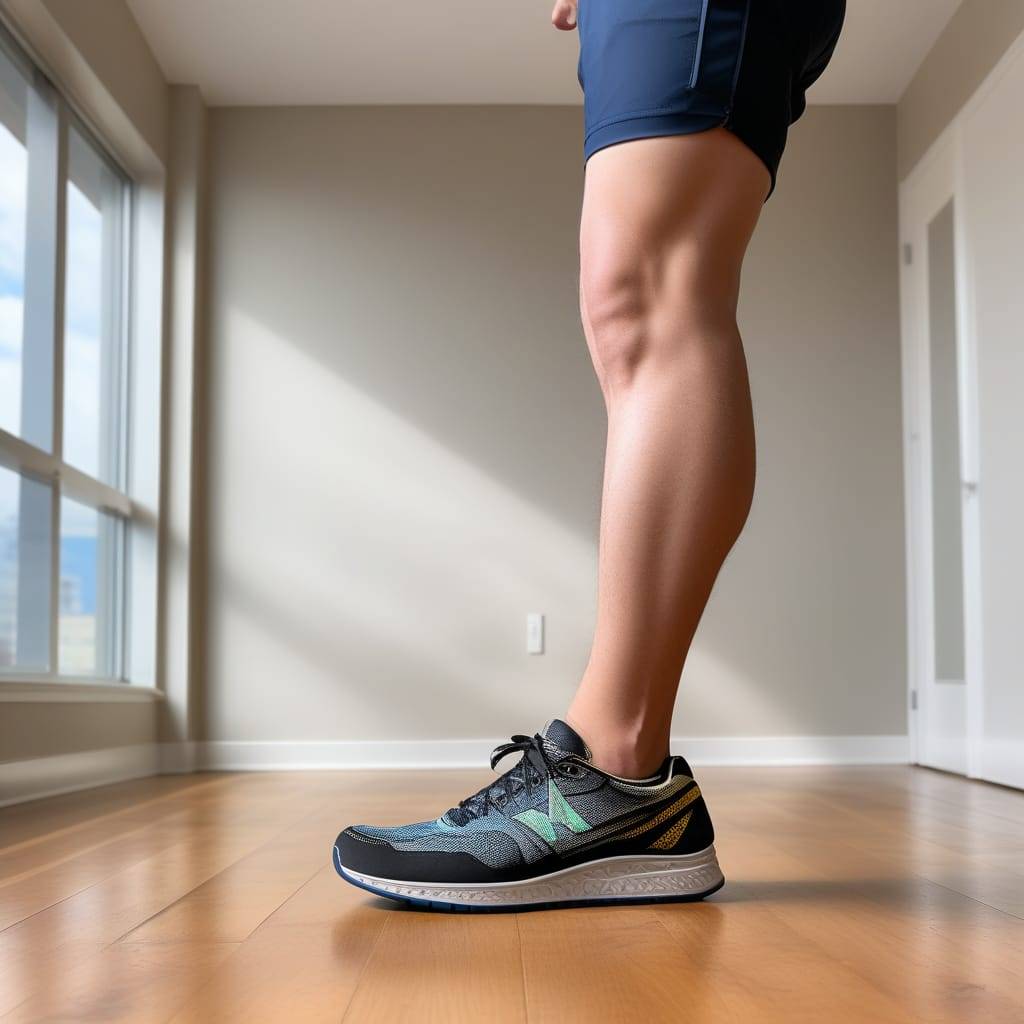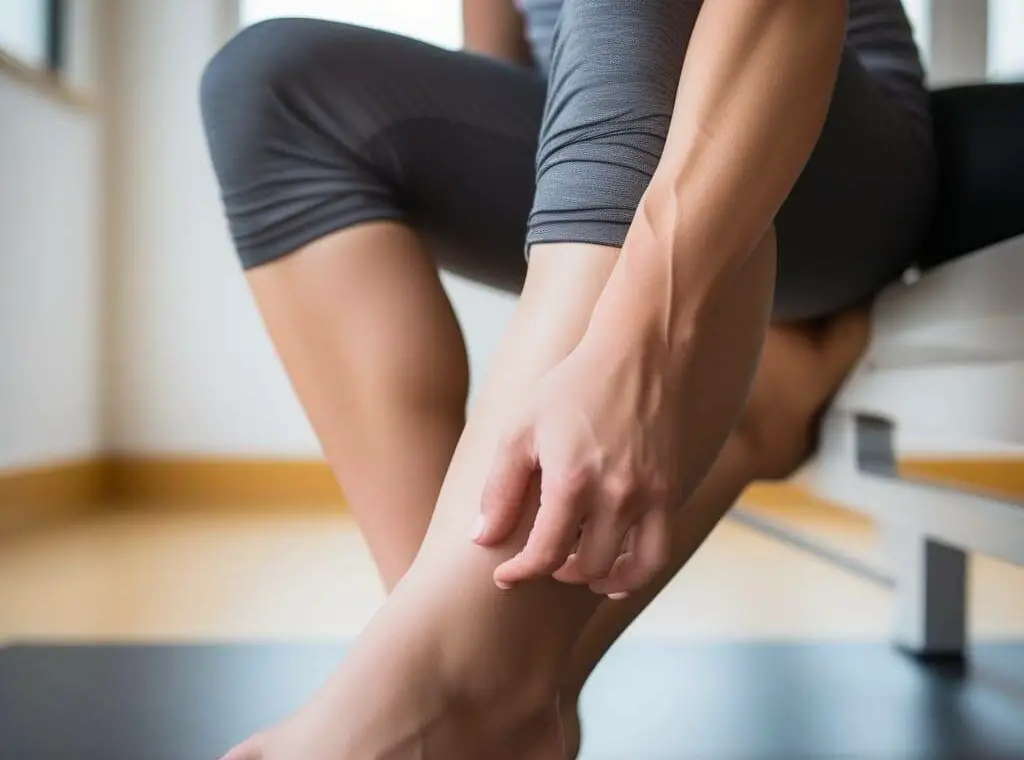- Metatarsalgia is a condition characterized by pain and inflammation in the ball of the foot, specifically in the metatarsal region. This discomfort can be caused by various factors, including overuse, improper footwear, or certain foot abnormalities.
- While medical intervention may be necessary in some cases, incorporating specific exercises into your routine can help alleviate symptoms and prevent further issues.
- Before starting any exercise program, it’s essential to consult with a healthcare professional to ensure that the chosen exercises are suitable for your specific condition.
- Below are some metatarsalgia exercises that may be beneficial in managing the condition.
Table of Contents
Toe Flexor Stretch:

- Sit on a chair with your feet flat on the floor.
- Lift one foot off the ground and extend your toes, pointing them away from your body.
- Use your hand to gently pull your toes back towards you, feeling a stretch along the bottom of your foot.
- Hold the stretch for 15-30 seconds, then switch to the other foot.
- Repeat 2-3 times on each foot.
Towel Scrunch:
- Place a small towel on the floor in front of you.
- Sit with your feet flat on the ground and try to pick up the towel using only your toes.
- Once you have a good grip on the towel, scrunch it toward you.
- Repeat this movement for 10-15 repetitions.
- Perform 2-3 sets.
Marble Pickup:
- Scatter marbles on the floor and sit on a chair.
- Using your toes, pick up one marble at a time and place it in a small container.
- Continue until all marbles are transferred.
- This exercise helps strengthen the muscles in the metatarsal area.
- Perform 2-3 sets of 10-15 repetitions.
Calf Stretch:
- Stand facing a wall with your hands placed on it at shoulder height.
- Take a step back with one foot, keeping it straight, and bend the front knee.
- Ensure the back heel remains on the ground, and you feel a stretch in the calf.
- Hold for 15-30 seconds and switch legs.
- Repeat 2-3 times on each leg.
Ankle Circles:
- Sit comfortably with your feet lifted off the ground.
- Rotate your ankles in a circular motion, first clockwise and then counterclockwise.
- Perform 10-15 circles in each direction.
- This exercise helps improve ankle flexibility and circulation.
Arch Strengthening:
- Sit or stand with your feet flat on the floor.
- Lift the arches of your feet by imagining a string pulling them towards the ceiling.
- Hold for 5-10 seconds, then release.
- Repeat 10-15 times.
- This exercise targets the muscles that support the metatarsals.
Toe Tapping:
- Sit on a chair with your feet flat on the ground.
- Lift your toes off the floor and tap them back down, one at a time.
- Repeat for 1-2 minutes.
- This exercise improves blood circulation and flexibility in the toes.
Foot Massage with a Tennis Ball:
- Sit in a chair and place a tennis ball under one foot.
- Roll the ball under your foot, applying gentle pressure.
- Focus on the areas that feel tense or tender.
- Continue for 5-10 minutes on each foot.
- This self-massage can help relieve tension and improve flexibility.
Resistance Band Exercises:
- Secure a resistance band around a fixed point and loop it around the top of your foot.
- Sit on the floor with your leg extended and pull your toes towards you against the resistance.
- Hold for 5-10 seconds and release.
- Perform 10-15 repetitions on each foot.
- This exercise targets the muscles that support the metatarsals and improves strength.
Intrinsic Muscle Strengthening:
- Sit on a chair with your feet flat on the ground.
- Lift your toes off the floor while keeping your heels down.
- Hold for 5 seconds, then lower your toes back down.
- Repeat 10-15 times.
- This exercise targets the intrinsic muscles of the foot.
Conclusion
Incorporating these exercises into your daily routine can contribute to the management of metatarsalgia. However, it’s crucial to start gradually and increase intensity as your strength and flexibility improve. If you experience persistent or worsening symptoms, it’s essential to consult with a healthcare professional for further evaluation and guidance. Additionally, choosing proper footwear and maintaining a healthy weight are important factors in preventing and managing metatarsalgia. Always listen to your body and tailor your exercise routine to your individual needs and capabilities.
What is metatarsalgia, and what causes it?
Metatarsalgia is a condition characterized by pain and inflammation in the ball of the foot, specifically in the metatarsal region. Common causes include overuse, improper footwear, foot deformities, and conditions such as arthritis or Morton’s neuroma.
How can I alleviate metatarsalgia pain at home?
Several exercises can help alleviate metatarsalgia pain. These include toe flexor stretches, towel scrunches, marble pickups, calf stretches, and intrinsic muscle strengthening. However, it’s crucial to consult with a healthcare professional before starting any exercise program.
Can proper footwear prevent metatarsalgia?
Yes, wearing appropriate footwear is crucial in preventing and managing metatarsalgia. Choose shoes with adequate arch support, cushioning, and a wide-toe box. Avoid high heels and shoes with inadequate support, as they can contribute to foot discomfort.
When should I seek medical attention for metatarsalgia?
If you experience persistent or worsening metatarsalgia pain despite home remedies and exercises, it’s advisable to seek medical attention. A healthcare professional can conduct a thorough examination, identify the underlying cause, and recommend appropriate treatment, which may include physical therapy, orthotics, or other interventions.
Are there lifestyle changes to help manage metatarsalgia?
Maintaining a healthy weight can reduce the strain on your feet and minimize metatarsalgia symptoms. Additionally, incorporating low-impact exercises such as swimming or cycling into your routine can help maintain overall foot health. It’s important to listen to your body, avoid activities that exacerbate pain, and follow a comprehensive approach to foot care.






